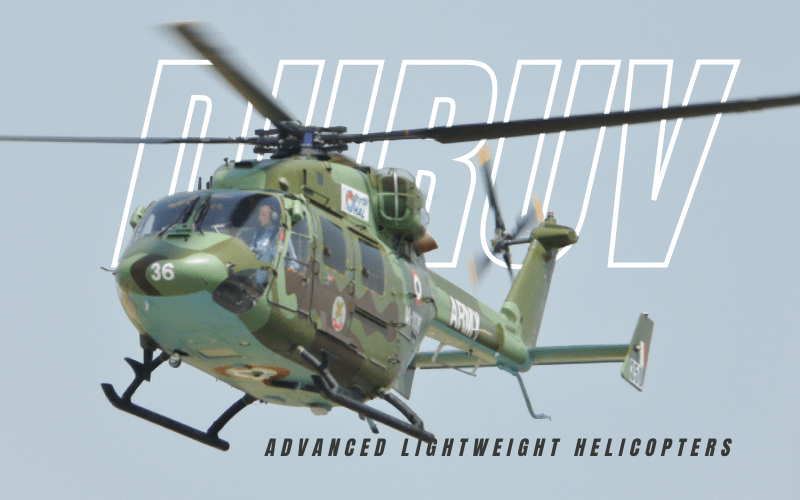Illustrating the advantages of developing made-in-India weapons platforms, Hindustan astronautics Ltd is poised to sell the Philippines a minimum of seven Dhruv Advanced lightweight Helicopters (ALH) and eight Dornier 228 aircraft, probably through a Government of Bharat line of credit.
because the “original equipment manufacturer” (OEM) of the Dhruv, HAL developed the Dhruv Mr while not being blocked by user restrictions.
The Philippines contracts are going to be price a record Rs 3,000 crore, India’s largest-ever export of defence equipment. If each craft perform well and deliver high usefulness rates, additional export orders might follow.
in line with trade and market assessments, Manila’s maritime chopper purchase has stewed all the way down to a straight contest between 2 helicopters – the Dhruv Mr and airliner Helicopters Panther AS565.
HAL had 1st disclosed Manila’s interest in shopping for these 2 “Made in India” platforms in its Annual Report for 2020-21. Now, HAL’s chairman, R Madhavan, has confirmed to Business Standard: “Our prospects within the Philippines look good.”
“Both helicopters price roughly the same, however we’ll provide a stronger support package, together with spares and support from HAL. we’ll conjointly offer Manila the choice to try and do its own MrO. we have a tendency to also will worth the Dhruv MR aggressively,” says Madhavan.
Contacted for comments, an airliner exponent stated: “We don’t treat discussions we would or won’t be having with our customers.”
The specialist maritime instrumentation within the Dhruv Mr includes: an on-board weather radar (6-7 crore); an electro-optical pod (5-6 crore); a searchlight (one crore); a hunter beam, emergency flotation gear; a VHF homing device; a traffic collision dodging device; a rescue hoist that’s anchored just under the most rotors, and a slippy device for marine commandoes.
HAL’s confidence in planning and developing helicopters is growing because it develops newer and additional subtle variants. The HAL chief says quite 320 Dhruv ALHS are delivered to the military. The eponymic light Combat helicopter (LCH), that has been regaling air show audiences with flying performances, is awaiting its 1st orders.
On November 19, Prime Minister Narendra Modi handed over a HAL-produced LCH to the Indian Air Force (IAF). maybe the foremost promising is that the single-engine light Utility helicopter (LUH), that HAL hopes to make four hundred of.
IAF boss Air Chief Marshal VR Chaudhary asked, throughout a recent visit to HAL, if the Dhruv may well be fitted with further capabilities. HAL’s helicopter engineers say they replied: “Just choose the systems you want. we are able to integrate all of them into the ALH, inside the bounds of its flying capability.”
India’s South Asian neighbours and near island countries – together with the Maldives, Mauritius, Nepal and currently Philippines – are already in operation the Dhruv ALH in little numbers and expressing interest in more. Myanmar desires the LCH.
however India’s growing potential as a helicopter exporter, “end user” problems still constrain its freedom of action. With the autochthonal content of HAL’s choppers still within the region of 50-55 percent, and demanding systems still foreign from the UK, Israel and France; exportation of these helicopters needs export clearances from these provider countries. that usually requires a political consensus over those countries it’s permissible to sell these choppers to. typically provider countries are reluctant to sell instrumentality to countries resembling Myanmar.
Despite the rhetoric over “Atmanirbhar Bharat” (self-reliant India), an easy political economy makes it not possible to lift autochthonal content on top of 50-55 percent. The material that the chopper body is unreal from is imported. Nor do any Indian companies manufacture the metallic element alloys that get into the chopper, as a result of it is not required in quantities massive enough to make economies of scale.
HAL’s engineers cite the instance of ejection seats – a classy product that’s almost entirely monopolised by a British firm, Martin Baker. Similarly, a British manufacturer, Cobham, makes mid-air refueling gear for pretty much the whole western region market. And, till Indian companies begin producing craft and chopper engines, exports of these can still take up 25-30 percent of the value of aircraft.
